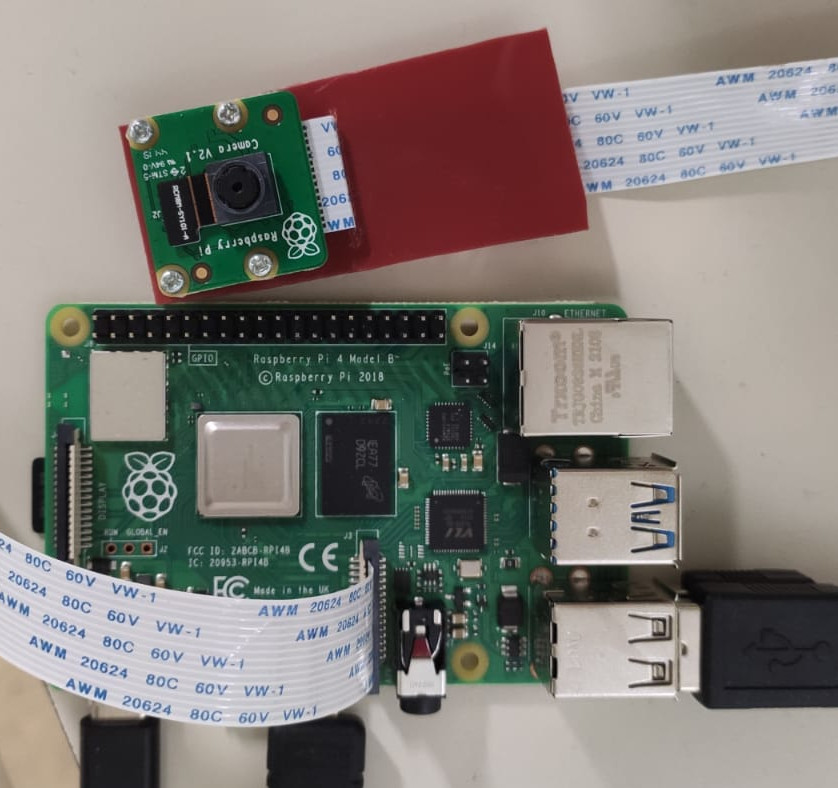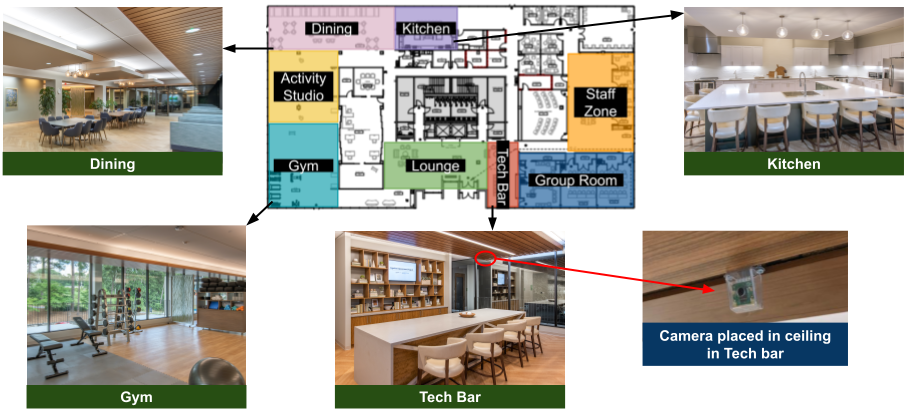A Cost-Effective Eye-Tracker for Early Detection of Mild Cognitive Impairment

0

Sign in to get full access
Overview
- This research paper describes a cost-effective eye-tracking system for early detection of mild cognitive impairment (MCI), which can be a precursor to Alzheimer's disease.
- The system uses a Raspberry Pi and a standard webcam to track eye movements and measure heart rate variability (HRV) as indicators of cognitive function.
- The researchers developed machine learning models to analyze the eye-tracking and HRV data and distinguish between individuals with and without MCI.
Plain English Explanation
The researchers have developed a low-cost system that can help identify early signs of cognitive decline. Eye-tracking is used as a way to detect subtle changes in how people's eyes move and focus, which can be an indicator of mild cognitive impairment (MCI). MCI is a condition where someone has more memory or thinking problems than normal for their age, but not severe enough to be considered dementia.
The system uses a small Raspberry Pi computer and a standard webcam to track a person's eye movements as they perform certain tasks, like looking at images or reading text. It also measures the person's heart rate variability (HRV), which can provide insights into their autonomic nervous system function.
The researchers then use machine learning techniques to analyze the eye-tracking and HRV data and determine if the person is showing signs of MCI. This allows for early detection, which is important because MCI can sometimes progress to more serious conditions like Alzheimer's disease.
The key advantage of this system is that it is much more affordable than traditional eye-tracking equipment, making it more accessible for clinics and researchers. By providing an early warning system for cognitive decline, it could help people get the support and treatment they need sooner.
Technical Explanation
The researchers designed a cost-effective eye-tracking system using a Raspberry Pi single-board computer and a standard USB webcam. They developed custom software to capture and analyze eye movement data, as well as measure the user's heart rate variability (HRV) using photoplethysmography (PPG).
The eye-tracking component tracks the user's gaze as they perform various tasks, such as viewing images or reading text. The system records metrics like fixation duration, saccade velocity, and blink rate, which have been shown to differ between individuals with and without mild cognitive impairment (MCI).
The HRV data is obtained using the webcam's ability to detect subtle color changes in the user's face caused by blood flow. This provides insight into the user's autonomic nervous system function, which can also be an indicator of cognitive decline.
The researchers then used machine learning techniques, including neural networks, to analyze the eye-tracking and HRV data and classify users as having MCI or not. They trained and evaluated their models using a dataset of participants with clinically diagnosed MCI and healthy controls.
The results showed that the combined eye-tracking and HRV features provided better classification accuracy compared to using either data source alone. This suggests that the two modalities capture complementary information about cognitive function.
Critical Analysis
The researchers acknowledge several limitations in their study, including the relatively small sample size and the lack of longitudinal data to track cognitive changes over time. Additionally, the system has only been validated in a controlled laboratory setting, and its performance in real-world clinical settings remains to be evaluated.
One potential concern is the reliance on a single webcam for both eye-tracking and HRV measurement. While this approach helps to reduce costs, it may introduce some challenges in terms of calibration and data synchronization. Using dedicated hardware for each component could potentially improve the robustness and reliability of the system.
Furthermore, the researchers note that their machine learning models were trained on a specific set of tasks and stimuli. It remains to be seen how well the models would generalize to other cognitive assessments or real-world activities.
Despite these limitations, the researchers have demonstrated the feasibility of a cost-effective eye-tracking system for early detection of MCI. Further research and development in this area could lead to more accessible and scalable solutions for monitoring cognitive health, which could have significant implications for the early intervention and management of neurodegenerative diseases.
Conclusion
This research paper presents a novel approach to developing a low-cost eye-tracking system for the early detection of mild cognitive impairment (MCI), a potential precursor to Alzheimer's disease. By combining eye-tracking and heart rate variability data, the researchers have developed machine learning models that can distinguish between individuals with and without MCI with reasonable accuracy.
The key advantage of this system is its affordability, which could make it more accessible for clinics, researchers, and individuals who want to monitor their cognitive health. Early detection of MCI is crucial, as it can allow for timely intervention and potentially slow the progression to more severe cognitive decline.
While the study has some limitations, it represents an important step towards developing cost-effective tools for the early diagnosis and management of neurodegenerative diseases. Further research and refinement of this technology could have significant implications for improving the quality of life for individuals at risk of cognitive impairment.
This summary was produced with help from an AI and may contain inaccuracies - check out the links to read the original source documents!
Related Papers


0
A Cost-Effective Eye-Tracker for Early Detection of Mild Cognitive Impairment
Danilo Greco, Francesco Masulli, Stefano Rovetta, Alberto Cabri, Davide Daffonchio
This paper presents a low-cost eye-tracker aimed at carrying out tests based on a Visual Paired Comparison protocol for the early detection of Mild Cognitive Impairment. The proposed eye-tracking system is based on machine learning algorithms, a standard webcam, and two personal computers that constitute, respectively, the Measurement Sub-System performing the test on the patients and the Test Management Sub-System used by medical staff for configuring the test protocol, recording the patient data, monitoring the test and storing the test results. The system also integrates an stress estimator based on the measurement of heart rate variability obtained with photoplethysmography.
Read more8/13/2024


0
Feasibility of assessing cognitive impairment via distributed camera network and privacy-preserving edge computing
Chaitra Hegde, Yashar Kiarashi, Allan I Levey, Amy D Rodriguez, Hyeokhyen Kwon, Gari D Clifford
INTRODUCTION: Mild cognitive impairment (MCI) is characterized by a decline in cognitive functions beyond typical age and education-related expectations. Since, MCI has been linked to reduced social interactions and increased aimless movements, we aimed to automate the capture of these behaviors to enhance longitudinal monitoring. METHODS: Using a privacy-preserving distributed camera network, we collected movement and social interaction data from groups of individuals with MCI undergoing therapy within a 1700$m^2$ space. We developed movement and social interaction features, which were then used to train a series of machine learning algorithms to distinguish between higher and lower cognitive functioning MCI groups. RESULTS: A Wilcoxon rank-sum test revealed statistically significant differences between high and low-functioning cohorts in features such as linear path length, walking speed, change in direction while walking, entropy of velocity and direction change, and number of group formations in the indoor space. Despite lacking individual identifiers to associate with specific levels of MCI, a machine learning approach using the most significant features provided a 71% accuracy. DISCUSSION: We provide evidence to show that a privacy-preserving low-cost camera network using edge computing framework has the potential to distinguish between different levels of cognitive impairment from the movements and social interactions captured during group activities.
Read more8/21/2024


0
Eye-tracking in Mixed Reality for Diagnosis of Neurodegenerative Diseases
Mateusz Daniol, Daria Hemmerling, Jakub Sikora, Pawel Jemiolo, Marek Wodzinski, Magdalena Wojcik-Pedziwiatr
Parkinson's disease ranks as the second most prevalent neurodegenerative disorder globally. This research aims to develop a system leveraging Mixed Reality capabilities for tracking and assessing eye movements. In this paper, we present a medical scenario and outline the development of an application designed to capture eye-tracking signals through Mixed Reality technology for the evaluation of neurodegenerative diseases. Additionally, we introduce a pipeline for extracting clinically relevant features from eye-gaze analysis, describing the capabilities of the proposed system from a medical perspective. The study involved a cohort of healthy control individuals and patients suffering from Parkinson's disease, showcasing the feasibility and potential of the proposed technology for non-intrusive monitoring of eye movement patterns for the diagnosis of neurodegenerative diseases. Clinical relevance - Developing a non-invasive biomarker for Parkinson's disease is urgently needed to accurately detect the disease's onset. This would allow for the timely introduction of neuroprotective treatment at the earliest stage and enable the continuous monitoring of intervention outcomes. The ability to detect subtle changes in eye movements allows for early diagnosis, offering a critical window for intervention before more pronounced symptoms emerge. Eye tracking provides objective and quantifiable biomarkers, ensuring reliable assessments of disease progression and cognitive function. The eye gaze analysis using Mixed Reality glasses is wireless, facilitating convenient assessments in both home and hospital settings. The approach offers the advantage of utilizing hardware that requires no additional specialized attachments, enabling examinations through personal eyewear.
Read more6/4/2024


0
CALM: Cognitive Assessment using Light-insensitive Model
Akhil Meethal, Anita Paas, Nerea Urrestilla Anguiozar, David St-Onge
The demand for cognitive load assessment with low-cost easy-to-use equipment is increasing, with applications ranging from safety-critical industries to entertainment. Though pupillometry is an attractive solution for cognitive load estimation in such applications, its sensitivity to light makes it less robust under varying lighting conditions. Multimodal data acquisition provides a viable alternative, where pupillometry is combined with electrocardiography (ECG) or electroencephalography (EEG). In this work, we study the sensitivity of pupillometry-based cognitive load estimation to light. By collecting heart rate variability (HRV) data during the same experimental sessions, we analyze how the multimodal data reduces this sensitivity and increases robustness to light conditions. In addition to this, we compared the performance in multimodal settings using the HRV data obtained from low-cost fitness-grade equipment to that from clinical-grade equipment by synchronously collecting data from both devices for all task conditions. Our results indicate that multimodal data improves the robustness of cognitive load estimation under changes in light conditions and improves the accuracy by more than 20% points over assessment based on pupillometry alone. In addition to that, the fitness grade device is observed to be a potential alternative to the clinical grade one, even in controlled laboratory settings.
Read more9/9/2024